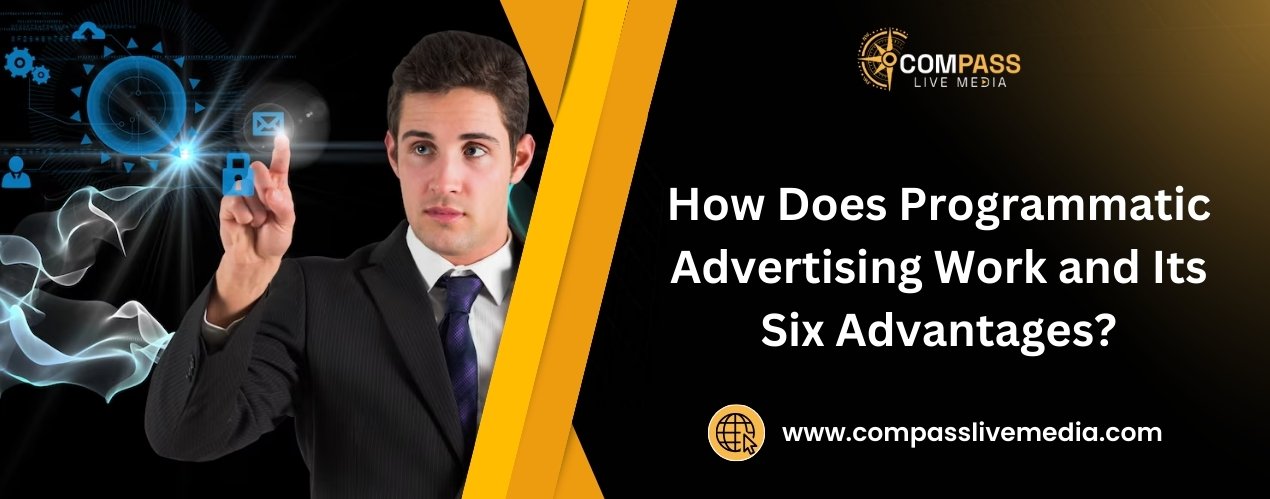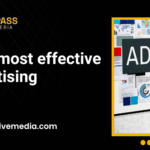What is Programmatic Advertising?
Programmatic buying and selling is the discretionary procurement and sale of advertising inventory. Programmatic advertising differs from other forms of advertising that involve the use of people to negotiate and issue insertion orders, as it is computer-driven and instantaneous. This technology applies data analysis and artificial intelligence to increase audience reach, thus positioning advertisements for the most suitable consumers. Programmatic advertising is a type of advertising that can be applied to numerous channels, such as display, video, social, and mobile.
Types of Programmatic Ads
1. Display Ads: These are the standard types of programmatic ads used by retargeting providers. Which include banners as well as other forms of graphic ads that are placed on websites, applications, and social networking sites.
2. Video Ads: They are pre-roll, mid-roll, and post-roll ads that can be placed before, in the middle of, or after video clips. Which are popular on platforms such as YouTube and other watch services.
3. Native Ads: display ad formats are in sync with the general appearance and feel of the website or the application they are placed. thus, they are non-interruptive in nature.
4. Social Ads: These are quota-based ads bought through algorithms on social display advertising sites like Facebook, Instagram, Twitter, LinkedIn, and others.
5. Audio Ads: Programmatic audio ads are inserted on music services, podcasts, and digital radio. Inventory/Programmatic audio ads concern edited. Short-form audio commercials played on music streaming services, podcasts, and online radio.
6. Connected TV (CTV) Ads: These are ads that are automatically rotated to those TV sets and devices that are connected to the internet, targeting the viewers of streaming TV shows, movies, etc.
How does Programmatic Advertising Work?
The Best Programmatic Advertising Platforms operate through a complex ecosystem involving several key components:
- Advertisers: businesses that have products or services that they seek to sell on the market .
- Publishers: The companies that offer ads have spaces or places where a particular ad could be placed.
- Demand-Side Platforms (DSPs): These are advertising intermediaries where the advertiser can purchase advertising space across the internet among various publishers.
- Supply-side platforms (SSPs): These platforms assist the publishers in the sense that they get to sell and maximize the available ad spaces, though programmatically.
- Ad Exchanges: Inventory exchange platforms are markets that connect DSPs and SSPs to transact and sell ad inventory in real-time.
- Data Management Platforms (DMPs): Paying attention to the specifics, these platforms facilitate data accumulation and analysis so that advertisers who use the platform can make the right decisions. As to where and to whom the advertisements should be shown.
6 Benefits of Programmatic Advertising
1. Precision Targeting: Display advertising enables the advertiser to reach out to certain audiences of his proportions and targets them based on demographic characteristics, interests, behavior, and geographical location.
2. Efficiency and Speed: The self-service element of programmatic advertising is a key advantage because of the time and expenses spared compared to direct deals with publishers and separate insertion orders.
3. Real-Time Optimization: Marketing managers or any other authority can have real-time tracking of campaign performances and even switch gears to attain maximum ROI.
4. Expanded Reach: Based on the programmatic advertising for small businesses definition. It allows accessing extensive amounts of advertising spots across networks that are reached through various platforms and gadgets, thus enhancing the overall reach of campaigns.
5. Cost-effective: Programmatic advertising as a targeted approach and real-time optimization minimizes wasted spend on advertisements and optimizes the utilization of given marketing dollars.
6. Advanced Analytics: Other advantages include giving full information and analytics. Solving the problem of interactiveness, and measuring the effectiveness of the display ad campaign to make changes based on statistics.
Pros and Cons of Programmatic Advertising
Pros:
- Increased Efficiency: It is in the automation of the advertiser’s purchases since it reduces the time consumed and also human interference.
- Enhanced Targeting: It also provides its advertisers with superior targeting solutions for ensuring ads get to the right targeted audience.
- Scalability: Indeed, promoting campaigns on a variety of media forms and targets can be easily achieved.
- Transparency: That way, the accomplishments of the campaign can be transparent through comprehensive reporting and campaign analytics.
- Flexibility: The fact that they are real-time means that one gets to be flexible with marketing techniques.
Cons:
- Complexity: Programmatic advertising is, however, highly technical, and this can be off-putting to new entrants into this field.
- Ad Fraud: The main weakness that is associated with programmatic buying is that the buying process is automated. Which can allow advertisers to be scammed through fake click-through rates and impressions.
- Brand Safety: Another barrier is that even if ads are placed with reputable publishers. They can appear in improper contexts that are detrimental to a brand’s image. Thus, monitoring and the use of brand safety features are necessary.
- Data Privacy: Getting and using consumer data for targeting must follow the legal requirements for privacy regulation. Which makes it one level more challenging.
- Initial Costs: Programmatic buying may involve high fixed costs because initiating the various advertisement programs could require expensive technologies and personnel.
Why Choose Programmatic Advertising?
Programmatic advertising is strategic for use by business entities that would like to integrate efficiency and effectiveness into their marketing. It provides market targeting that is highly accurate, immediate, and all-encompassing, which makes it a valuable tool to accomplish commonly set marketing objectives. Regardless of whether you own a small business that aims to expand its client base or are still a startup company that needs to be promoted. With its services and products and cooperation with influencers, programmatic advertising is considered an effective and inexpensive method.
For small businesses, programmatic can be of even greater benefit because of the ways that it offers the opportunity to help marketing dollars go further. The advertisements can be targeted to specific audience categories, and the campaigns can be controlled in real time. Making it possible for small businesses to get a better and more efficient rate of return as per the cost coefficient of conventional kinds of advertisements.
Programmatic advertising can also be used to make influencer marketing for startups even more effective. An effective way of finding suitable influencers is by analyzing the data used in social media to determine which of the influencers are most suitable to reach. The intended audience in the startup’s campaigns, resulting in more meaningful campaigns. Another category that can benefit from programmatic is social display advertising. This means that social media marketing provides companies with a way through which they can advertise. As well as publicize their products through pictures and other forms of advertisements that will fit the interests of the users and their behavior. Hence promoting high conversion rates.
FAQs
1. Why should you work in programmatic advertising?
The demand for programmatic advertising professionals is projected to increase rapidly, making them crucial to modern business operations and driving organizational success, surpassing the average growth rate for other occupations.
2. What are programmatic advertising’s advantages?
Programmatic advertising ensures the right placement and targeting of products to the right audience, benefiting both sellers and advertisers. It leads to profit for both parties while also benefiting the audience by locating the products they need.
3. What is programmatic work?
Programmatic buying is an automated process for buying and selling digital advertising space. Utilizing data-driven strategies to target the right audience at the right time, ensuring the brand’s visibility.
4. Where is programmatic advertising used?
Native programmatic advertising, which is automated and less intrusive than other types of ads. Then is used on websites, apps, and TV platforms and can blend in with page content.




